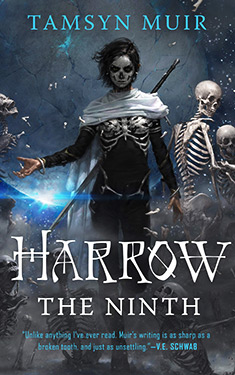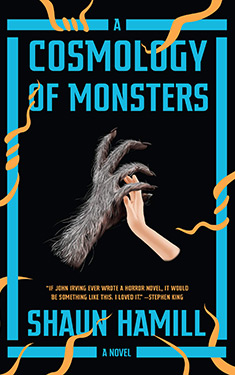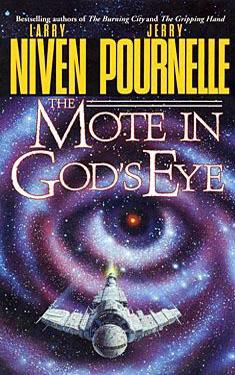Michael Taggart
Completed 6/24/2021, Reviewed 6/28/2021
3 star
I got this book because I kept getting ads for it on Facebook. I read the synopsis and eventually succumbed. I’m glad I did because it was thoroughly enjoyable. That’s not to say it’s written well, because it has its problems, but in this case, the whole is greater than the sum of its parts. The most amazing part of this book is that it’s the most detailed description of a magic system I’ve ever read. Taggart, a new author who previously published photography books, explains the development of the main character’s magical abilities with such precision that you’d think he spent his whole life developing it.
 Jason is a gay man living in Louisville, Kentucky. He makes a living by playing poker. He generally wins because he has some light, innate magical abilities. After one game, in the middle of having a romp with a fellow player, two men break into his hotel room and begin chasing him. When they finally catch up with him, they beat him to near death. However, he escapes and is found by his landlady Sandy and her building’s handyman John. They turn out to be magical as well. They wrap him in spells to enhance his recovery. The thing is, this near-death experience has helped Jason come into his full power as a mage. He’s taken under Sandy and John’s wing, along with another housemate, Annabeth, to learn how to use his power. While he’s learning, this ragtag group comes under attack by an evil mage and her minions whom they must fight to keep their place in the world of magic.
Jason is a gay man living in Louisville, Kentucky. He makes a living by playing poker. He generally wins because he has some light, innate magical abilities. After one game, in the middle of having a romp with a fellow player, two men break into his hotel room and begin chasing him. When they finally catch up with him, they beat him to near death. However, he escapes and is found by his landlady Sandy and her building’s handyman John. They turn out to be magical as well. They wrap him in spells to enhance his recovery. The thing is, this near-death experience has helped Jason come into his full power as a mage. He’s taken under Sandy and John’s wing, along with another housemate, Annabeth, to learn how to use his power. While he’s learning, this ragtag group comes under attack by an evil mage and her minions whom they must fight to keep their place in the world of magic.
Jason is a pretty great character. He thought he was the only one with magic abilities until Sandy and John reveal themselves to him. He’s a bit of a Mary Sue, but he’s just so likeable that it didn’t bother me. He has a lot of learning to do and a lot of healing to experience. It’s also great that his being gay is very organic. It doesn’t overwhelm the plot. And this is not a heavy M/M romance; it’s very PG-13. His love interest is Tyler, an incubus with a good heart, which is hard to find in this world. Most incubi suck all the emotions out of a person through sex, like a male banshee, but Tyler only extracts the bad stuff. Tyler is sweet, and hopefully we’ll see more of him in the sequel.
Sandy is head of the House, an honor she received by being a terrific warrior mage. She’s very knowledgeable, but isn’t all-knowing. She learns from Jason whose magic ability developed differently from her and most of the mages she knows. John is awesome too, an amazingly handsome half-human half-troll. He helps care for Jason in the beginning, which includes a particularly amusing scene where he helps him shower. It’s a revelation for Jason because he never thought he was attracted to hairy men, and well, things get a little embarrassing for Jason since John is straight. Annabeth is also neat. She has a different magic ability, based on sounds and music. She’s very motherly, being, well really, looking, 50ish and always having a warm, accepting smile for Jason. Before he learns her name, he calls her Sunshine.
There are two other characters worth mentioning. There’s Penny, an actual penny that Jason used as a focus for his magic in the beginning of the story and later becomes sort of sentient. How this happens and what Jason does with Penny is part of the amazing world building Taggart does. There’s also Bermuda Moses, a kitten who steals Jason’s heart and helps him in his battles against evil forces. Bermuda steals the scenes whenever he appears, and I’m not even a cat lover!
Now for the problems. As I said, the writing is not great. There are times I felt like the word choices and sentences were simple. It reminded me of how I write. He uses “really” a lot, like I do. I always feel like it’s a really lazy word 😉 that a good writer would only use sparingly. I also thought that all the descriptions of how magic works was great, but at times it derailed the plot. It kinda was like magic, plot, magic, plot, magic, plot. It just didn’t flow together that well. I’m sure a good critic could pick out more problems, but these were the ones that stood out for me.
Despite the problems, the book is very enjoyable. It’s a solid three stars out of five. If I rated it on emotional response alone, I would bump it up a star, but I feel like the author still needs some practice developing his writing skills. Still, I found myself identifying with Jason through his good times and bad times. I certainly intend to read the next volume in this series and am looking forward to it, regardless of whether Taggart grows as a writer as quickly as I’d like. This book is simply enjoyable, a feel-good read that I’d recommend to anyone.


